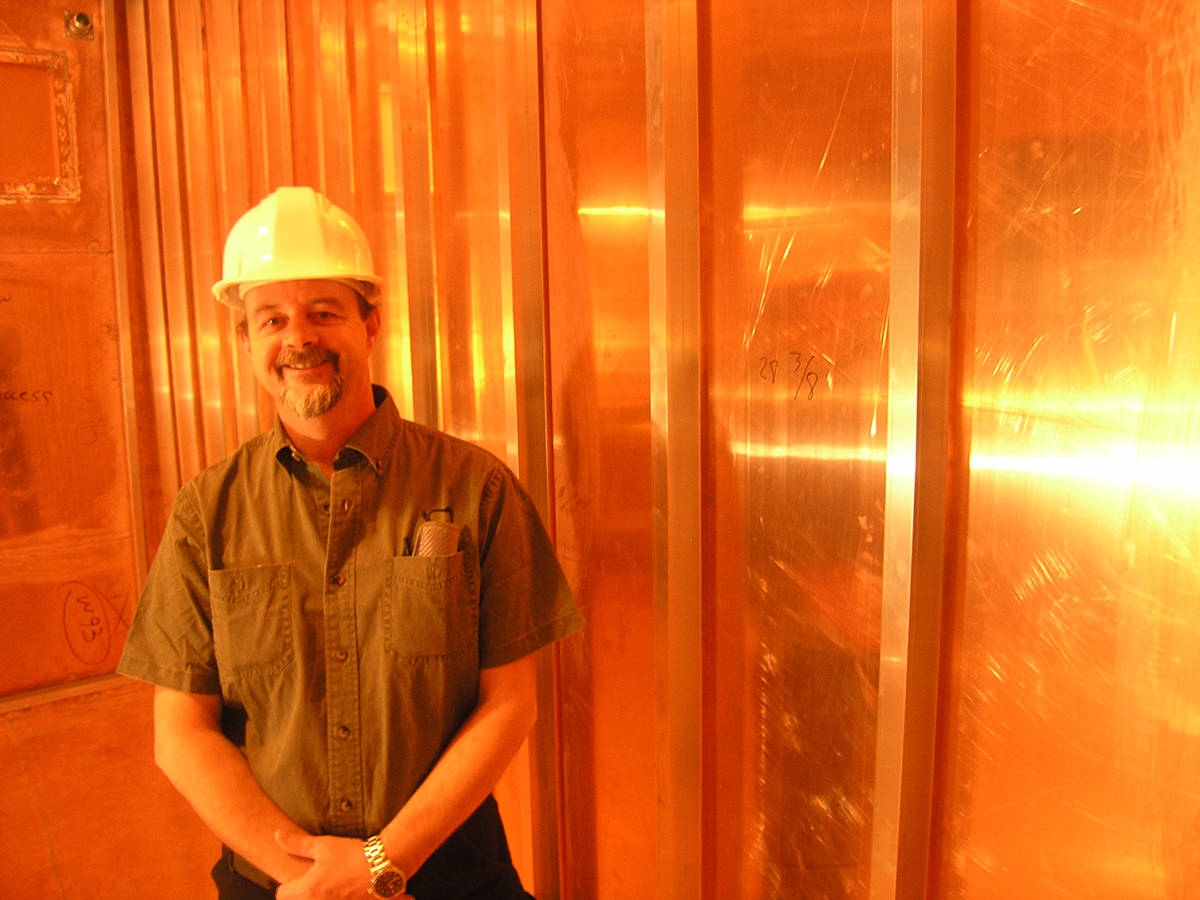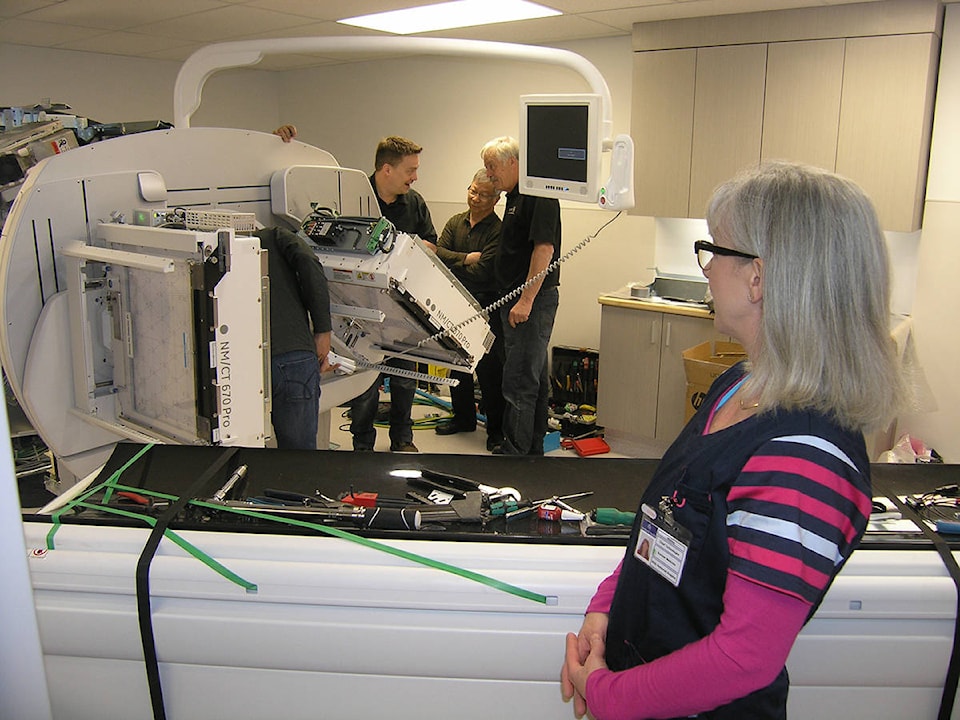NORTHWESTERN residents will soon be benefitting from not one but two sophisticated imaging devices to give specialists a better view of the workings of the inside of the human body.
In addition to the purchase and anticipated installation this summer of a first-ever magnetic resonance imaging (MRI) device, which uses a powerful magnet to provide detailed inner body images, Mills Memorial Hospital took delivery two weeks ago of another first-ever device, a SPEC CT.
The acronym stands for ‘single-photon emission computed tomography’ and what a SPEC CT does is combine nuclear imaging by using a chemical ingested by patients that then emits gamma rays with a conventional CT scanner.
These rays are then detected by a gamma camera and when combined with the computed tomography function 3-D images are produced.
Shelley Fisher, Mills Memorial Hospital’s chief nuclear medicine technologist, describes the combination of a gamma ray-reading camera and CT scanner as a huge step forward as it replaces an existing gamma camera which has seen its day.
“Now we will be able to do the nuclear scan with a gamma camera and then slide the patient into the CT,” she said.
“We’ll be able to determine what’s going on and exactly where it’s going on,” Fisher said of the ability for the production of detailed images.
SPEC CT scans, for instance, can diagnose and track the progression of cancer that has spread to bones and diagnose heart problems.
Fisher said the ability to provide both SPEC CT and soon MRI services will reduce the need for northwestern residents to travel outside the region.
And the SPEC CT can also serve as a backup to the current CT device that’s located on the main floor of the hospital, she said.
The SPEC CT and the MRI devices will be housed on the upper floor of Mills Memorial in a combined space that was once used for storage and for the previous nuclear medicine department.
Chris Simms, a senior official with the Northern Health Authority based in Terrace, said the purchases of each device at approximately the same time combined into a circumstance that allowed extensive renovations on the upper floor.
“People will be greeted here,” said Simms on a recent tour of the space in gesturing toward what will soon be a reception area for patients for both services.
There’s also be a patient waiting area, change rooms and washrooms.
That’s in addition to the rooms in which each device will be housed and the rooms where technicians for each device will be seated.
The crated SPEC CT arrived at Mills via a large flatbed truck and was lifted up by a crane and carefully maneuvered through an opening on the upper floor created by removing a window.
A team of technicians from device supplier GE then began the task of putting the device together in preparation for its in-service date.
That same window opening will be used when the MRI device arrives.
When in operation, the SPEC CT will be just one of three in the north, the two others being in Fort St. John and in Prince George.
The SPEC CT project, including its purchase from GE, renovations and installations, is in the order of $1.5 million.
It was purchased through a province-wide contract negotiated by health authorities with GE so that its cost was less than what it would have been if bought as a one-off agreement.
The North West Regional Hospital District is to pay 40 per cent of that cost – $621,600 following the standard method of cost-sharing of larger scale medical equipment purchases.
The MRI device and work associated to install it will cost an estimated $3 million with the regional hospital district contributing 40 per cent.
The contract to not only provide the MRI device but to prepare the space for it has gone to Siemens Healthcare, a multinational technology provider.
The nature of the MRI’s functioning is such that it needs shielding from outside electromagnetic radiation to prevent distortion of the images it will produce and to prevent its own electromagnetic radiation from causing interference in any other nearby medical devices.
That’s been done by installing copper panels on the floor, walls and ceiling which are then soldered together.
The Northern Health Authority had originally planned to buy a mobile MRI unit to travel between Terrace and Fort St. John but it was convinced to buy two fixed units because of advancing technology and price changes.

